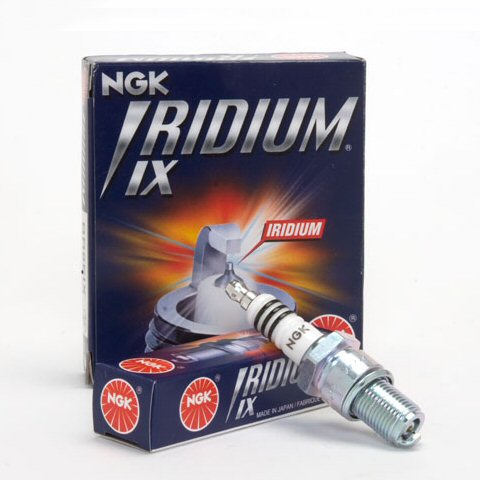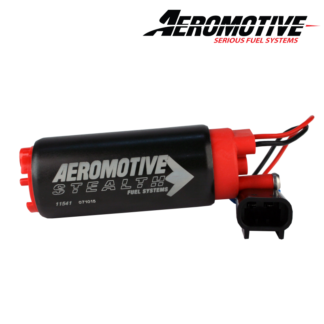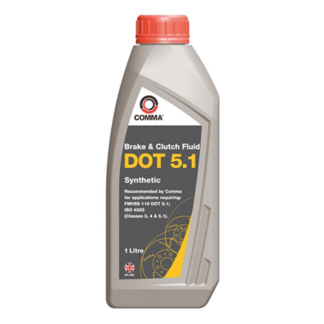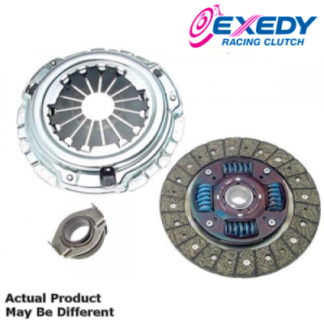Description
For literally decades, Racing Beat has recommended NGK Spark Plugs for Street, High Performance, and Race rotary engine applications. The NGK EIX spark plug range is recommended for use in a variety or Rotary Engine Applications, please see below for a guide to what plugs should suite your application.
The NGK B7EIX Spark Plug
Is recommended for non-turbo, non-ported, high performance rotary engines used primarily for city/street driving.
The NGK BR8EIX spark plug
Is recommended either for non-turbo, street ported, high performance rotary engines used primarily for city/street driving or non-turbo, non-ported high performance rotary engines used primarily for highway driving.
The NGK BR9EIX Spark Plug
Is recommended for non-turbo, street-ported, high performance rotary engines used primarily for highway (sustained moderate RPM) driving.
The NGK BR10EIX spark plug
Is recommended for use in non-turbo, street-ported, high performance rotary engines used primarily for racing (sustained high RPM).
The installation of this “EIX” series spark plug requires the use of a “Thin-Wall” socket–Racing Beat P/N 11529.
Price shown is for a set of 4 spark plugs in your chosen heat rating..
Specifications: NGK BR?EIX (where”?” is the specific heat rating of the selected plug)
B= 14mm Thread Diameter
?= Heat Rating *
E= 19mm Thread reach
I= Iridium
X= Booster Gap (Firing End Construction)
Note: The use of spark plugs other than the “factory recommended” plugs requires the use of a “thin wall” socket. Installation and removal of these plugs requires the use of the thin wall spark plug socket that can be special ordered from us.
*A spark plug’s heat range has no relationship to the actual voltage transferred though the spark plug, Rather, the heat range is a measure of the spark plug’s ability to remove heat from the combustion chamber. The heat range measurement is determined by several factors; the length of the ceramic center insulator nose and its’ ability to absorb and transfer combustion heat, the material composition of the insulator and center electrode material.
The insulator nose length is the distance from the firing tip of the insulator to the point where insulator meets the metal shell. Since the insulator tip is the hottest part of the spark plug, the tip temperature is a primary factor in pre-ignition and fouling. Whether the spark plugs are fitted in a lawnmower, boat, or a race car, the spark plug tip temperature must remain between 850-1500 degrees F. If the tip temperature is lower than 850 degrees F the insulator area surrounding the center electrode will not be hot enough to burn off carbon and combustion chamber deposits. These accumulated deposits can result in spark plug fouling leading to misfire. If the tip temperature is higher than 1500 degrees F the spark plug will overheat which may cause the ceramic around the center electrode to blister and the electrodes to melt. This may lead to pre-ignition /detonation and expensive engine damage.
The firing end appearance also depends on the spark plug tip temperature. There are three basic diagnostic criteria for spark plugs: good, fouled and overheated. The borderline between the fouling and optimum operating regions is called the spark plug self-cleaning temperature. The temperature at this point is where the accumulated carbon and combustion deposits are burned off.
Bearing in mind that the insulator nose length is a determining factor in the heat range of a spark plug, the longer the insulator nose, the less heat is absorbed, and the further the heat must travel into the cylinder head (rotor housings) water journals. This means the plug has a higher internal temperature, and is said to be a hot plug. A hot spark plug maintains a higher internal operating temperature to burn off oil and carbon deposits, and has no relationship to spark quality or intensity.
Conversely, a cold spark plug has a shorter insulator nose and absorbs more combustion chamber heat. This heat travels a shorter distance, and allows the plug to operate at a lower internal temperature. A colder heat range can be necessary when the engine is modified for performance, subjected to heavy loads, or is run at high RPM’s for a significant period of time. The colder type removes heat more quickly, and will reduce the chance of pre-ignition/detonation and burn-out of the firing end. (Engine temperature can affect the spark plug’s operating temperature, but not the spark plugs heat range). The NGK heat range is from Hot (2) to Cold (10).






Reviews
There are no reviews yet.